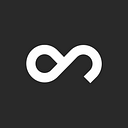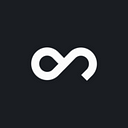The Perfect Landing Page: Myth or Reality?
Bad and good news for designers who want to build the perfect landing page
A perfect landing page is like a store window displaying something beautiful that you really want to buy. And the price is right, too! You waste no time entering the store to take a closer look at the item. A minute later you’re at the checkout, paying for your purchase. What a lucky find!
Most landing pages, however, resemble overstuffed display windows that you pass by without noticing. Why is that? Where do the designers and developers fail?
The true purpose of the landing page
To create an attractive landing page you have to understand what purpose it serves and who it is made for.
A landing page is a tool for swiftly capturing the visitor’s attention, delivering information, and thus guiding them in their next action. When designing a landing page, remember the three steps your user must take.
Receiving information — Making a decision — Intentional action
Your main objective is to make sure the user actually wants to take these steps, of which the last one is the most important. Can a designer actually do that?
We’ve got bad news for designers who work alone. It’s virtually impossible for a web designer to make a large group of people want anything just by looking at their brilliant design.
Why not? Because a high conversion rate isn’t based on design.
A high conversion rate is based on marketing.
Conversion-centered design employs marketing and psychological tricks. The landing page is a prime example of CCD. Its design is just the outer shell of a central idea. It’s like the bright-colored skin of an orange, while the juicy flesh is all inside.
If there’s nothing behind the pretty outer layer, your landing page will never provide a good conversion rate. Who needs orange peel?
But don’t despair, dear designers. All is not lost!
If you don’t like your design being compared to orange peel, let’s try growing an actual orange. That is, building a landing page that fulfills its purpose.
How to make an orange out of your landing page
First off, let’s have a clear understanding of what makes an attractive, bright-colored, juicy… landing page.
A good landing page ought to be:
1. Understandable
The visitor has to understand what the website is offering within the first few seconds. The information should be brief, its presentation logical and obvious.
Attention! The landing page must serve only one objective. If your business has more than one objective, each one needs a separate landing page.
2. Enticing
A landing page design, product presentation or information offer must be immediately enticing. This can be achieved through good marketing, careful and unique design, and easy page navigation. It pays for the designer to know psychology and understand what the users need. Your job is to make your offer trustworthy and show the customer the advantages they are getting. However, your chances of creating a landing page that serves both your business and your target audience are vanishingly slim without a marketing professional. With no marketing, all you will get is the orange peel.
3. Easy to use
Remember, a landing page only needs to serve one purpose: encourage people to do one particular thing. To purchase, to order, to register, to sign up — whatever, as long as it’s just one thing. For that, you need a simple application form and a button. Getting to it should be as easy as possible, while the amount of info to fill out must be minimal. What the landing page design must never do is make the whole project more complicated or distract the user from the target purpose.
The Three Principles of Good Landing Pages
1. Ubiquitous marketing
This is the stage where you need a market researcher, and no “jack-of-all-trades” designer can ever replace them. Even the most talented designer is still a designer, not a marketing specialist. Trying to create conversion-centered design (CCD) without having specific marketing skills is pretty much futile. It’s not enough to conduct market analysis; you need to be able to correctly interpret the findings to know what will attract the target audience and what’s the best way to do it. The analysis will enable the market researcher to create a concept of persuasion and predict the users’ possible objections.
Competition analysis — Audience analysis — Concept
The concept of persuasion is a set of measures for convincing the user that:
- the product is exciting and they need it;
- the product has special advantages;
- the product is reliable;
- there’s no doubt that purchasing it (performing the target action) is the reasonable thing to do.
The concept of persuasion is the heart of our orange.
2. Proper prototype
The landing page prototype and text should be based on the concept of persuasion. Needless to say, the text should not be written by a designer.
Not every market researcher is capable of analyzing all the expectations, fears, pains, and benefits of the target audience, or come up with efficient psychological triggers and ways of capturing the audience’s attention. To make sure you’re doing it right, it would be best to run a survey among your potential users.
It is at the prototype-building stage that designers join the project. (Finally!)
Based on the market analysis, designers can understand:
- what the general idea of the landing page is;
- what style to use for the landing page;
- which blocks and in what order it should contain;
- how the user will navigate to reach the objective.
And now, as promised, some good news for designers. Without you, the market researchers won’t be able to sell anything!
3. Conversion-centered design
It takes one glance at the page for the visitor to decide whether to stay or leave. The value of design cannot be overstated. The quality of design is what determines the further fate of your selling offer. It’s the designer’s job to visually relay the essence of your business offer to the users.
There are certain design methods that boost the conversion rate. They help you make the landing page fun and attractive for the users, encouraging specific emotions and desires. All these methods are based on marketing and psychological tricks. The better the designer’s understanding of these tricks, the more their chances of success. (Every good designer is a marketing specialist at heart.)
See more: Conversion-Centered Design
A perfect landing page is a product of team efforts
Of course, design is not really orange peel. Design is the visualization of an idea. And if the idea is bad, no design will save it.
We realize that not every designer has a marketing specialist at hand. Our company used to be a team of “jack-of-all-trade” designers, too. Today, we work in concert with other professionals, which is what the market and our desire to build quality projects demand. It didn’t take us long to realize that only by working together with other professionals can we create a viable, marketable product. Only an extremely arrogant designer can believe he or she can create a web product with a high conversion rate without consulting a marketing specialist. (Not even Steve Wozniak could accomplish what he did alone!)
A good designer has no arrogance. They understand the limits of their competence. Who among us can honestly claim proficiency and experience in two or three fields at once?
So a good designer has only two alternatives: either study marketing or ask for help. This happens naturally. At first, a good designer attempts to study up on marketing, then starts consulting with a marketing specialist, and finally realizes they can’t do without one. A good designer attempts to study up on web development, consults with a developer, and finally realizes… You know how it goes.
A perfect landing page is built from a perfect concept, a perfect design, a perfect development, and a perfect promotion. Does it exist, though?
It’s easier to find a perfect orange.
But that doesn’t mean we shouldn’t strive toward perfection. Designers do it every day!
Special offer from Outcrowd: Uniquely designed landing page in 40 hours

